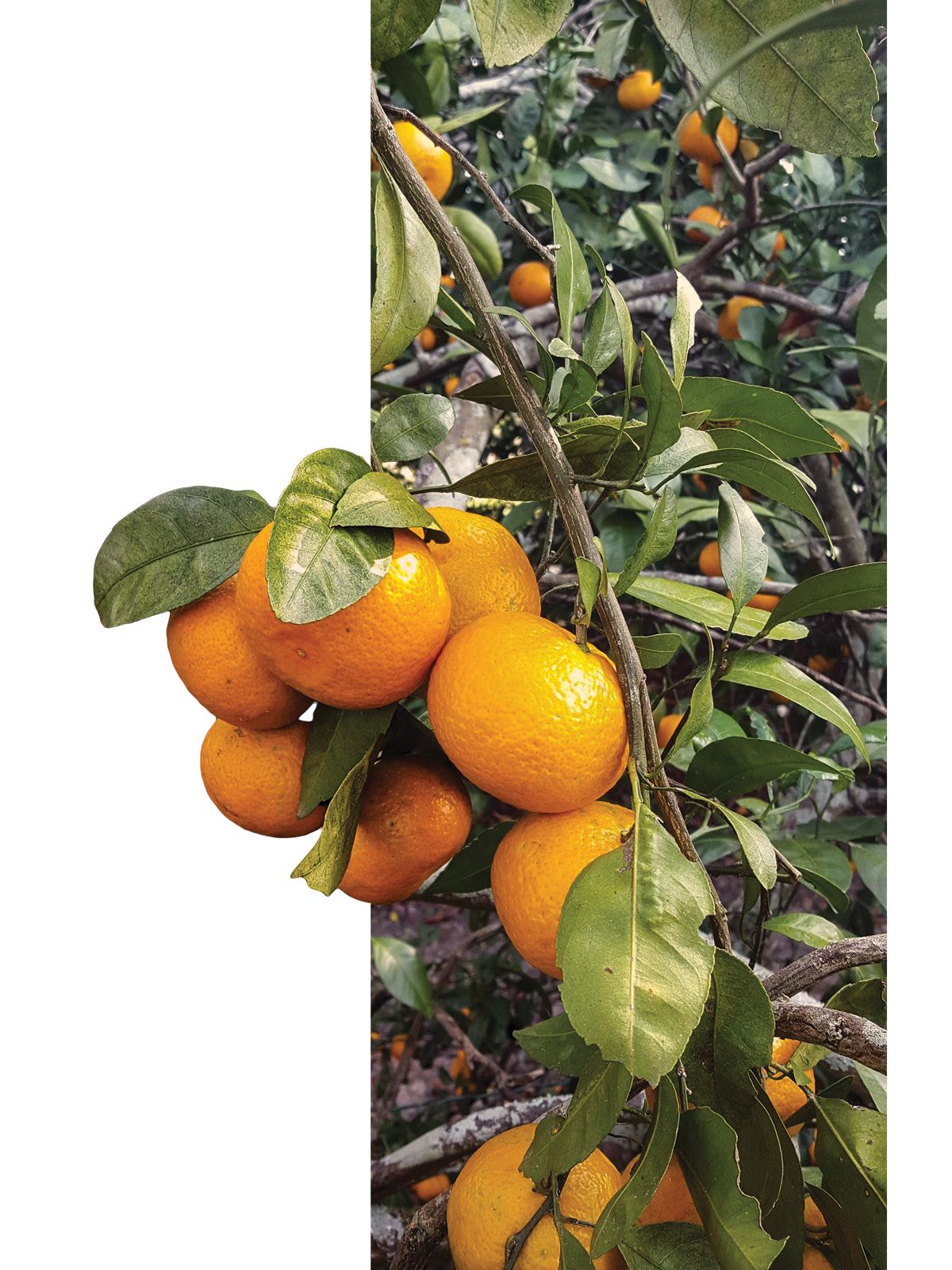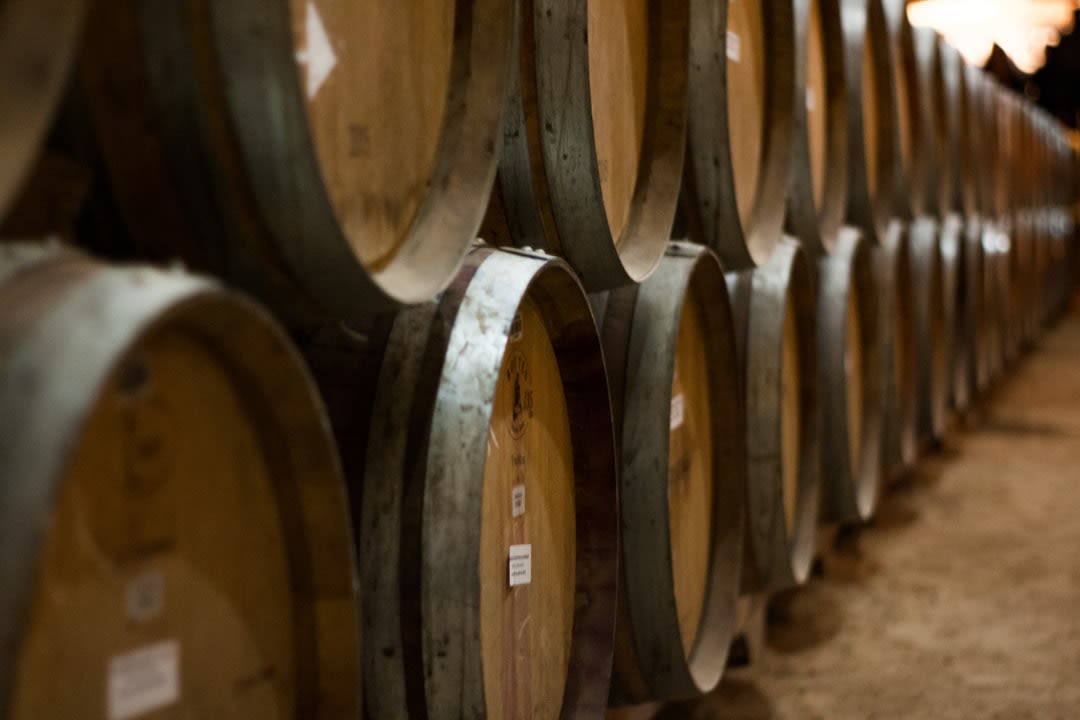Cropping Up
UGA Extension helps burgeoning Georgia crop industries bear fruit
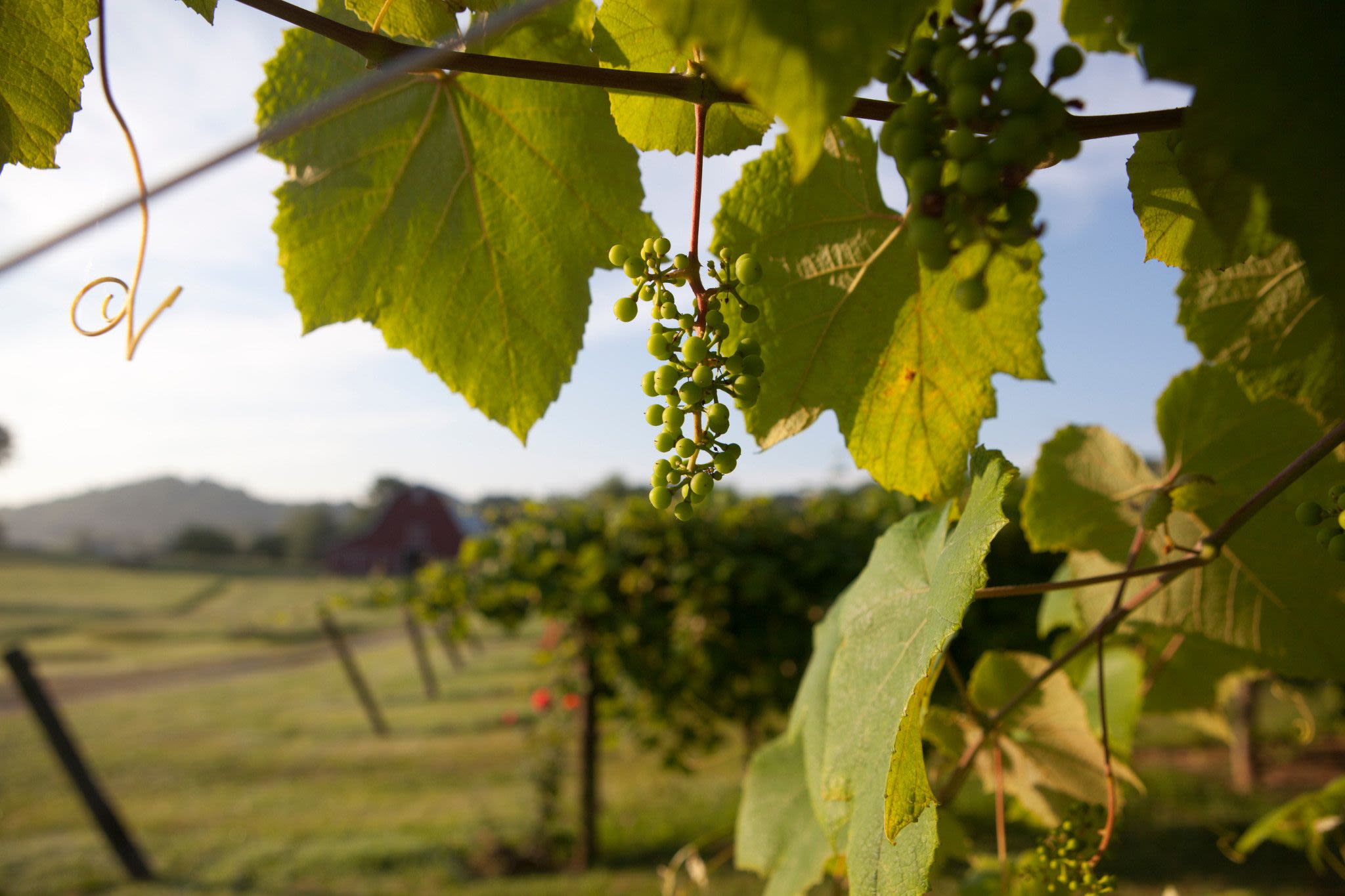
Satsumas grow in an orchard in Berrien County, Georgia. (Photo by Sarah Swain, Bugwood.org)
Satsumas grow in an orchard in Berrien County, Georgia. (Photo by Sarah Swain, Bugwood.org)
CONSUMA SATSUMA
Some of Georgia’s newest cash crops are among the sweetest. Learn how UGA is helping shepherd the state’s growing citrus industry.
Like many south Georgians, Wayne Hanna’s yard includes a citrus tree. For years, he’s picked fruit from it for breakfast or an afternoon snack, but the convenience of homegrown fruit carries with it a drawback. Usually a whole bunch of them.
Seeds.
They are common in homegrown fruit and can make the normally satisfying experience of biting into a juicy orange a lot less sweet.
Hanna, a legend in the plant breeding world, specifically with turfgrass, retired from the Department of Agriculture in 2002. He immediately joined the faculty at the University of Georgia’s Tifton campus. When he arrived, he asked the assistant dean if he could work on developing a cold-tolerant citrus tree that produced seedless fruit.
“Go ahead,” was the answer.
Casks at Blue Cielo Farms in Commerce, Georgia
Casks at Blue Cielo Farms in Commerce, Georgia
When Cassandra and Gary Wiseman bought 185 acres of land in rural Jackson County, Georgia, they envisioned preserving the land through sustainable forestry stewardship. Over the next decade, they recognized the abundance of naturally growing muscadine vines throughout the property. This bounty ultimately sparked the dream of operating a vineyard and winery on the property.
After learning as much as they could about viticulture, the business of operating a vineyard, the particulars of their forested land and the local climate, they celebrated their first harvest in 2021. They produced 1,200 pounds of ‘Villard Blanc’ and ‘Carlos’ grapes and went on to win a bronze medal at the 2022 San Francisco Chronicle Wine Competition in the White Native American/Hybrid category.
“If it weren’t for UGA we wouldn’t be opening this business,” Cassandra Wiseman said. “UGA’s support has given us the confidence to invest in this business, and we are excited to expand our vineyards with the addition of ‘Lomanto’, ‘Norton’, ‘Lenoir’ and ‘Chardonel’ vines this year.”
That's because the owners of Blue Cielo Farms — Jackson County’s first farm winery — worked directly with Greg Pittman, the Jackson County Agriculture and Natural Resources agent for University of Georgia Cooperative Extension. Pittman and a UGA viticulturist came onsite and coached the fledgling winery owners in selecting the right kind of grapes to grow and consulted on the design of the vineyard’s rows and trellises.
The owners attended various workshops offered through the UGA College of Agricultural and Environmental Sciences, including how to put together a spray program to keep pests at bay. They were also connected with UGA’s Small Business Development Center, a unit of UGA Public Service and Outreach, where business consultant David Stob helped them develop a sound business plan. And all of those services came without cost. “UGA has made our dreams possible,” Wiseman said. Blue Cielo Farms Vineyards and Winery is scheduled to open to the public for wine tastings and events in late 2022.
“Our wines are every bit as beautiful as the ones in California.”
Phillip Brannen
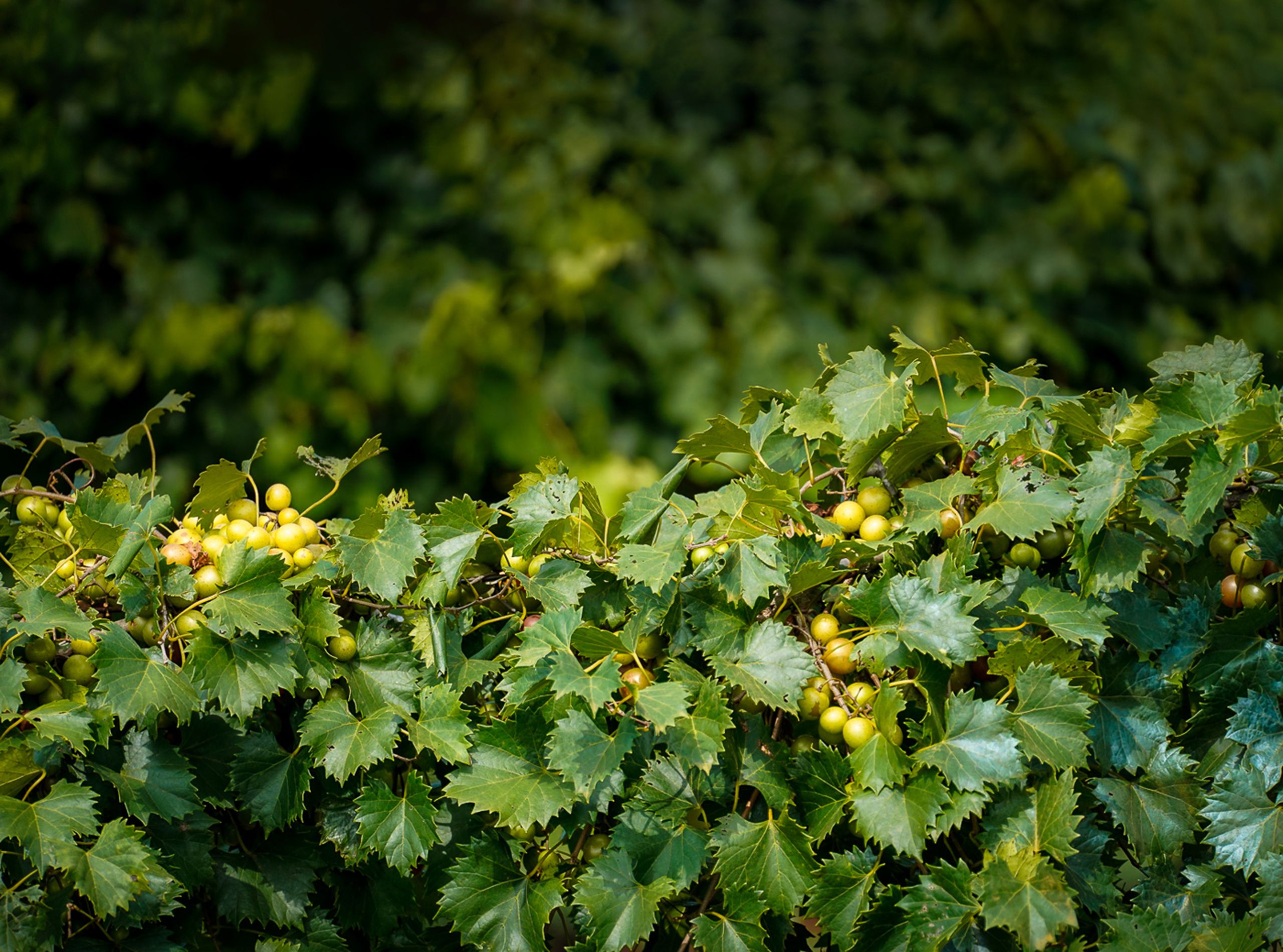
Georgia is now home to more than 100 farm wineries and vineyards and UGA Extension agents work with nearly all of them, said Phillip Brannen, UGA fruit disease Extension specialist and plant pathologist. The state’s wine industry is continuing to grow, not just in the north Georgia Mountains, but also west of Atlanta and in south Georgia, he said. The differences in the regions are reflected by geography and grapes.
The northeast Georgia mountains are home to the state’s most developed grape-growing region. In fact, the U.S. Alcohol and Tobacco Tax and Trade Bureau designated the region as an American Viticultural Area in 2018, dubbing it the “Dahlonega Plateau.” The region’s clay soil and plentiful rainfall make growing grapes challenging, but the higher elevations and cooler winter temperature in comparison to other parts of Georgia are an advantage — those factors kill both fungi and bacteria that damage vines, said Nathan Eason, UGA Extension agent for White County, which is home to five vineyards and six wineries. Like other Extension agents, Eason teaches vineyard owners how to prune, manage shoots and develop a management technique for canopies. Ranging from as small as an acre to larger than 40 acres, most of the vineyards have been planted since the early 2000s, and the industry in northeastern Georgia continues to grow, Eason said.
“Our climate is a challenge for growing grapes,” Brannen said. For most of the grapes, diseases are one of the primary challenges given that Georgia is wet, humid and hot, “generally a perfect environment” for airborne fungi spread by insects. Heavy rainfall and cloud cover contribute to a wider range of airborne fungal diseases compared with conditions in California and Europe, said Clark MacAllister, UGA Extension agent in Lumpkin and Dawson counties. “The fungal diseases are mostly spread through microscopic spores by the wind,” he said.
Of particular concern is Pierce’s disease, a deadly bacterial infection that kills grapevines from California to Florida, including Georgia, where it thrives in the subtropical climate. Much of the decision on which grapes to grow in Georgia is based on determining the most Pierce’s disease-resistant vines. UGA Extension agents work directly with vineyard growers to help their businesses succeed.
In the emerging grape-growing region west of Atlanta, growers primarily plant French-American hybrid grapes and ‘Norton’ grapes, a native species that is Pierce’s disease-resistant. And because the Georgia wine industry is in its infancy, much of the Georgia-specific research happening is focused on how to best grow vines here to maximize a vineyard owner’s chances of success. “Research comes from your Extension specialists and is specific to which grape you are growing,” said Paula Burke, UGA Extension agent for Carroll County. Ten years ago, the county perched on the Alabama border was home to just one vineyard. Now, there are at least seven in the region.
In south Georgia, vineyards are devoted almost exclusively to native muscadines, with a smattering of hybrids, Brannen said. South Georgia vineyard owners are getting creative about the wines they produce, including new products such as muscadine brandies.
The Georgia wine industry may still be underappreciated by wine enthusiasts, Brannen said. “Folks have a misperception that, if it’s Georgia wine, it’s going to be bad,” said Brannen, who conducts research and technology transfer for many fruits, including grapes and muscadines. “But our wines are every bit as beautiful as the ones in California.”
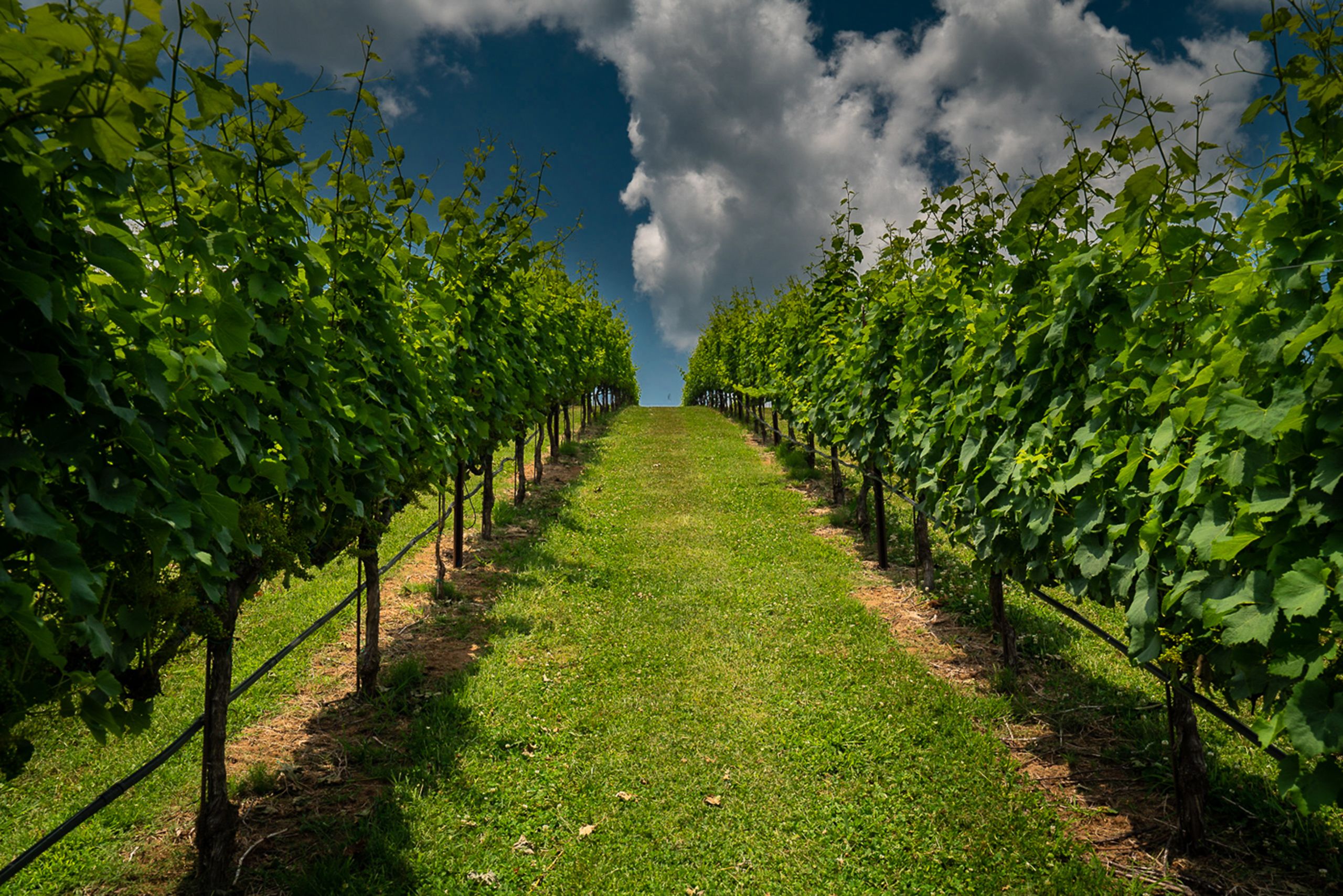

Did you enjoy this story?
Check out recent issues of the Almanac for more great stories like this one.

